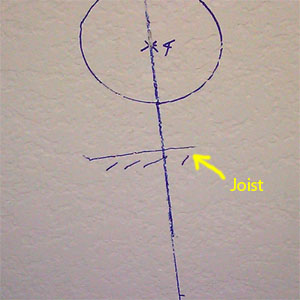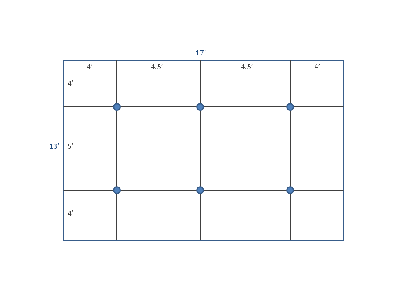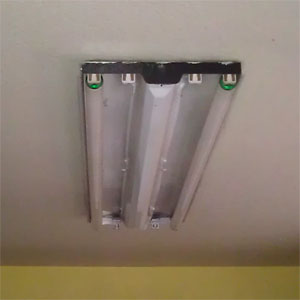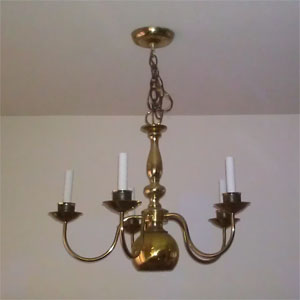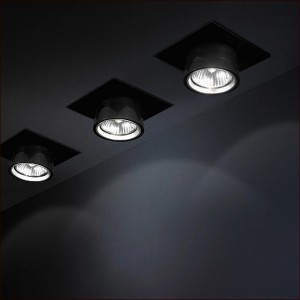The first thing you'll need to do is figure out where the joists are so you can decide where you want to place the lights and run the wiring.
I don't know of any better way to do it so I just got on the ladder and started scanning away with the stud finder and marking the joist locations and direction they run:
By the way, I used a sharpie to mark things on the ceiling and that turned out to be a bad idea because it took quite a few layers of primer to cover everything up so if I were to do this again, I'd use a pencil instead.
Next, you'll want to figure out where and how many lights you want to install. There's
plenty of sites that show you how to calculate the distance between each light:
eHow - How to Calculate Recessed Lighting Spacing
DoItYourself.com - Guide to Recessed Lighting Spacing
The easiest one to understand (for me at least) is the "ceiling height rule of thumb" I found on Pegasus Lighting's blog, which is to simply divide your ceiling height by 2. I have standard 8' ceilings so there should be approximately 4' between each recessed light.
Using my living room which is 17' x 13' as an example, I needed 6 lights in order to space each one roughly 4' apart. I came up with the number by sketching a plan like the following on a piece of paper (note: this is just a quick picture I threw together using power point so it's most likely not to scale):
Depending on where your joists are, you might have to shift some of the lights by a few inches.
Now is also the time to decide how to run the wiring to power the lights. If you're lucky and already have a power source up there then great.
Both of which I'm going to rip out and replace with some nice, sleek recessed lights.
If you aren't so lucky and don't have an existing power source you can use (as was the case for my living room), then try to find the next best thing -- a switch controlled power outlet. It's a little more of a hassle because you'll need to run the wiring through the wall and up to the ceiling but sure beats having to wire up a switch (which I have no idea how to do).
